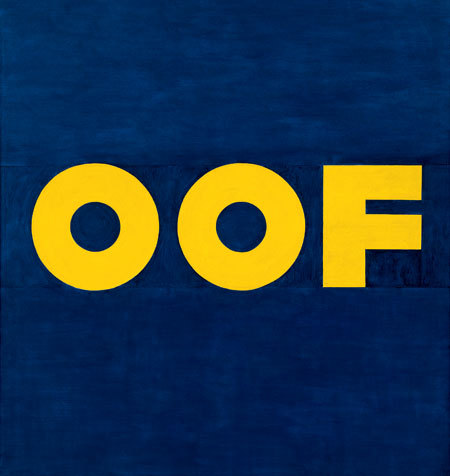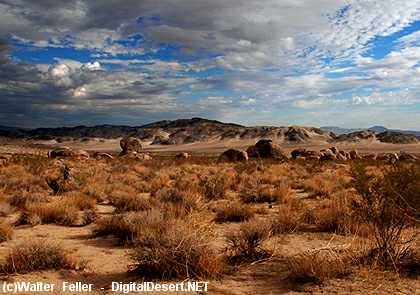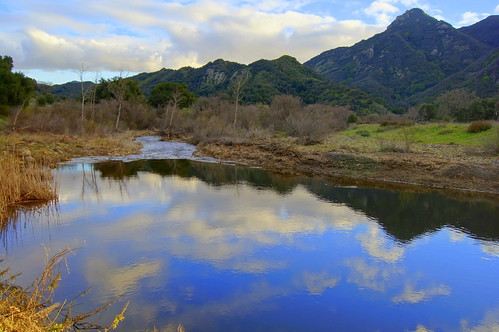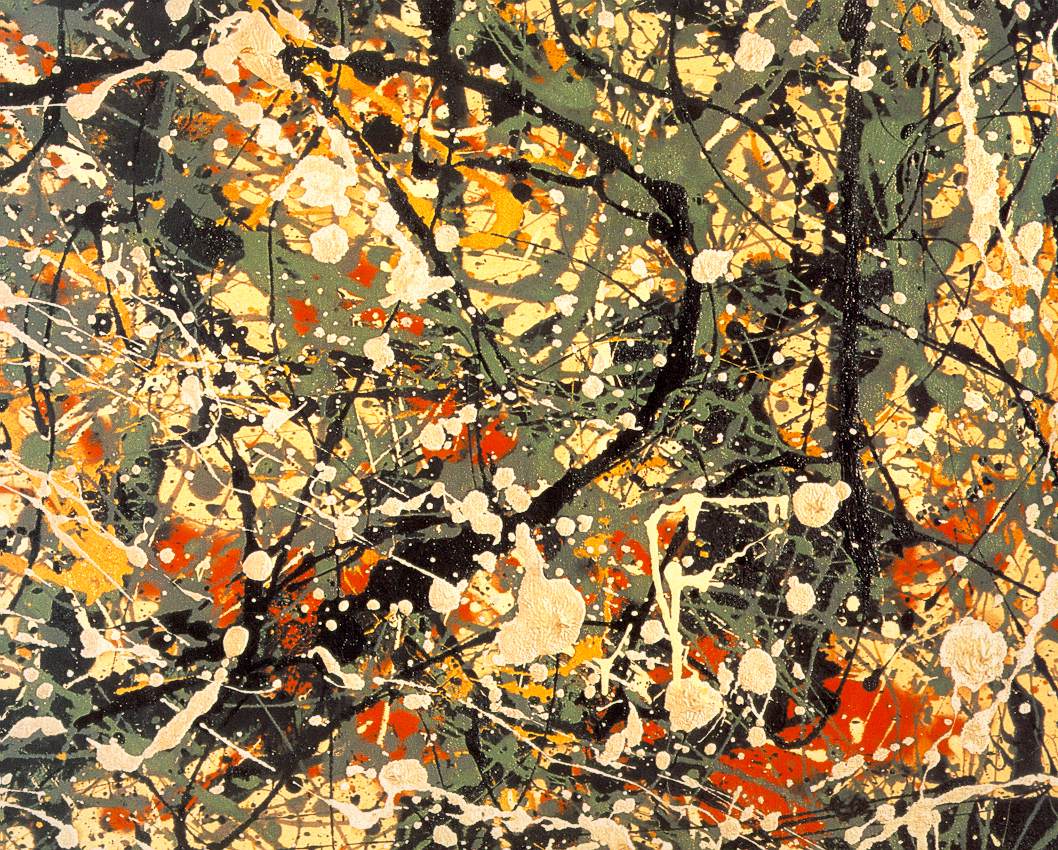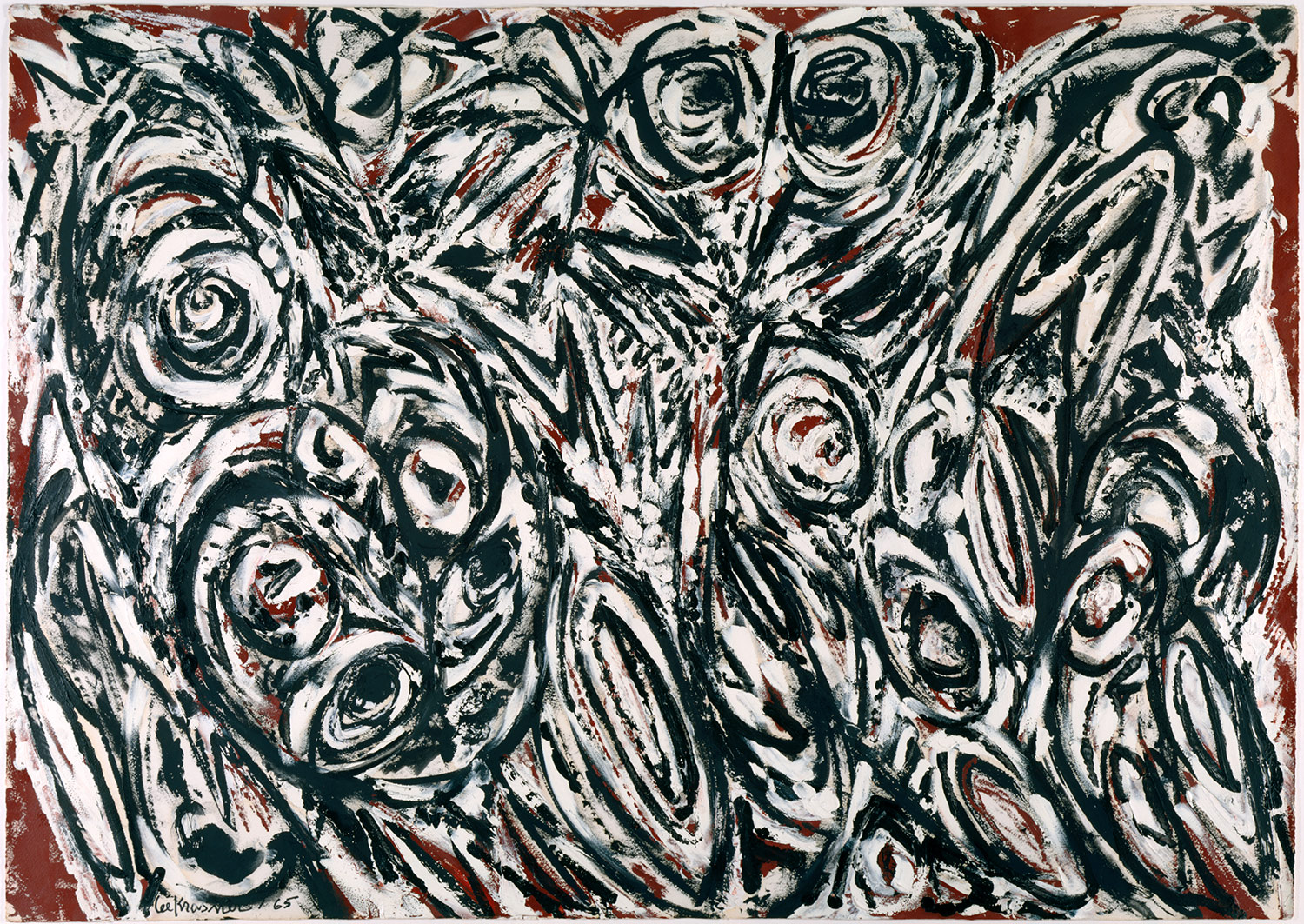My research project started with America’s Pop Art artist Edward Ruscha. He grew up in Oklahoma City and later on moved to California in 1956, which had many influences on Ruscha’s most famous works such as Hollywood and the Large Trademark with Eight Spotlights, also known as the twentieth century fox logo. He attended the Chouinard Art Institute and joined the Ferus Gallery group, where he filmed the movie The Cool School. Not only did Ruscha work with painting, printmaking, and drawing, but he also worked with photography and film as well. (Reference)
Edward Ruscha is known mostly for his Pop Art. His works are simple, but very concise. He uses bright and vivid colors in his paintings and in some, uses typography. Using just one simple word like Scream or Oof, he creates a concise image with a strong, straightforward message. Ruscha’s art works are simple, but very powerful like when people say, “a picture is worth a thousand words.”
When I started this research, I first focused mostly on the lateral research of Edward Ruscha’s influences. Many of his artistic influences came from Southern California, Hollywood, and automobile and the road. He was also influenced by Jack Kerouac, Arthur Dove, and Jasper John (Reference).
While researching about one of Ruscha’s influences, Jack Kerouac, I noticed that Kerouac was a writer and not an artist which increased my curiosity of how he influenced Ruscha. After reading about one of Kerouac’s books called On the Road, everything pieced in together. In one of Ruscha’s interviews, he talked about his road trips and hitchhiking experiences, where he observed the Southern California landscapes and buildings like the gas stations (Reference). Ruscha then transferred his observations from his road trip experiences into art like the Twentysix Gasoline Stations and Hollywood.
Ruscha’s influences of Southern California landscape had many influences on the Hollywood film industry. The common signs and logos such as the Hollywood sign and the mountains from the paramount pictures were all designs by Ruscha. As an artist from the Pop Art movement, he used bright and vivid colors for these, capturing the audience’s attention and also used typography in perspective, giving the audience a straightforward message.
Another influence of Ed Ruscha was Jasper Johns, especially his painting Target with Four Faces. The art work is a combination of a painting of concentric circles that make an image of a target, and a wooden sculpture of four cropped, eyeless faces. The bold colors of red, yellow, and blue that Johns used for his target reminded me of Ruscha’s paintings because just like Jasper John, Ruscha uses many bright and bold colors for his paintings.
One of the things that I found the most interesting in this research project was the Black Dahlia Case. In one of Ruscha’s interviews, Ruscha was asked if he reads any L.A. writers and he answered James Elroy. After doing some lateral research about Elroy, I learned that he was a crime fiction writer who wrote the book The Black Dahlia. Then my research narrowed down to the Black Dahlia murder case, where a pretty young woman named Elizabeth Short was murdered, cut in half. Though this particular murder case didn’t have much influence in Ruscha’s art works, James Elroy’s writing about the different scenery in Los Angeles could have had some influence on Ruscha.
Edward Ruscha is one of America’s greatest Pop Art artists. His art was mostly influenced by the landscapes of California. Ruscha’s art works are bright, simple, concise, and straightforward with a strong message. Hollywood’s famous logos and signs were designed by Ruscha, which shows how Ruscha not only plays a big role in the Pop Art Movement, but also in the film industry in Hollywood as well. Looking at Ruscha's works, one can see what he has experienced in his life time, his unique thoughts, and interests. His works may be simple, but they are very powerful.

